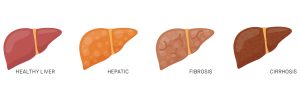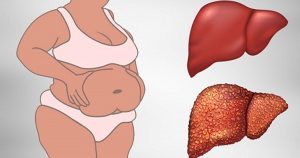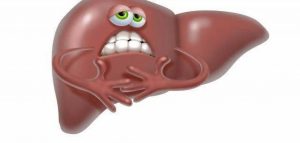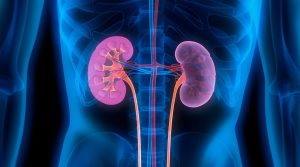The liver is one of the busiest organs. It takes part in all types of metabolism, coagulation and immunity support, is a storehouse of vitamins and minerals, neutralizes toxic compounds and has many other effects. However, the modern nature of life and nutrition, as well as viruses and drugs, are quite merciless to the organ, and its destruction often begins at a young age.
When is it time to get your liver checked
The liver, contrary to popular belief, is not capable of “getting sick”. And the “roots” of unpleasant sensations and heaviness in the right hypochondrium come from the hepatic membrane (organ capsule).
The enlargement of the liver in volume due to inflammation or edema is accompanied by stretching of the capsule and irritation of the receptors of the latter.
In addition, the liver “knows how” to regrow itself, and even after removal of up to ¾ of the organ’s volume, it is fully restored after 4-6 months. This feature allows for a long time to successfully compensate for the destruction of liver cells and “mask” the pathology.
And you can suspect liver problems by:
dyspeptic symptoms (nausea, stool disturbances, abdominal discomfort) that occur after eating, especially rich in fats (since the normal production of bile is disrupted);
the appearance of edema (due to a deficiency of proteins synthesized by the liver that “keep” blood plasma from “seeping” through the vessels),
chronic iron deficiency anemia and signs of a deficiency of fat-soluble vitamins, if they are adequately supplied with food (since the liver is the largest store of nutrients in the body);
increased fatigue (since the mitochondria of the liver cells are the most active producers of energy),
hormonal disorders (due to a violation of the synthesis of protein carriers),
violation of the cholesterol “balance” of the blood (since cholesterol not only comes from outside, but in most cases is synthesized by the liver),
increased bleeding (due to a decrease in the production of some coagulation factors)
and signs of drug overdose, with their usual use (since it is the liver that is responsible for the inactivation of biologically active substances and the general “detox” of the body).
How to check
The destruction of any cells in the body, including liver cells (hepatocytes), is accompanied by the “outpouring” of their intracellular enzymes into the blood. And, in the case of the liver, such markers, first of all, are hepatic transaminases – ALT and AST.
Normally, they enter the bloodstream in a minimal amount, as a result of “natural” cell death. Massive destruction of the liver is accompanied by an increase in their concentration 5 or more times from the normative limits. And such an analysis is the rationale for the diagnosis of hepatitis.
Another marker assay is bilirubin.
Moreover, an increase in direct bilirubin is a marker of liver and / or biliary tract damage. And together with an increase in alkaline phosphatase and Gamma-HT, it indicates a violation of the outflow of bile.
The increase in free bilirubin to the liver has no special relationship, since it is caused by excessive destruction of red blood cells. And it is used only for the differential diagnosis of pathologies among themselves.
And the diagnosis of bile-hepatic disorders, as a rule, is carried out in a comprehensive manner and, taking into account all the indicated enzymes.
Another, but not obvious marker of liver problems is blood cholesterol.
Lipid is synthesized in the liver https://en.wikipedia.org/wiki/Liver and “sensitively” reacts to the state of the latter.
And an increase in total cholesterol and, especially, its “harmful” fractions (VLDL, triglycerides) is one of the earliest possible signs of liver pathology.



